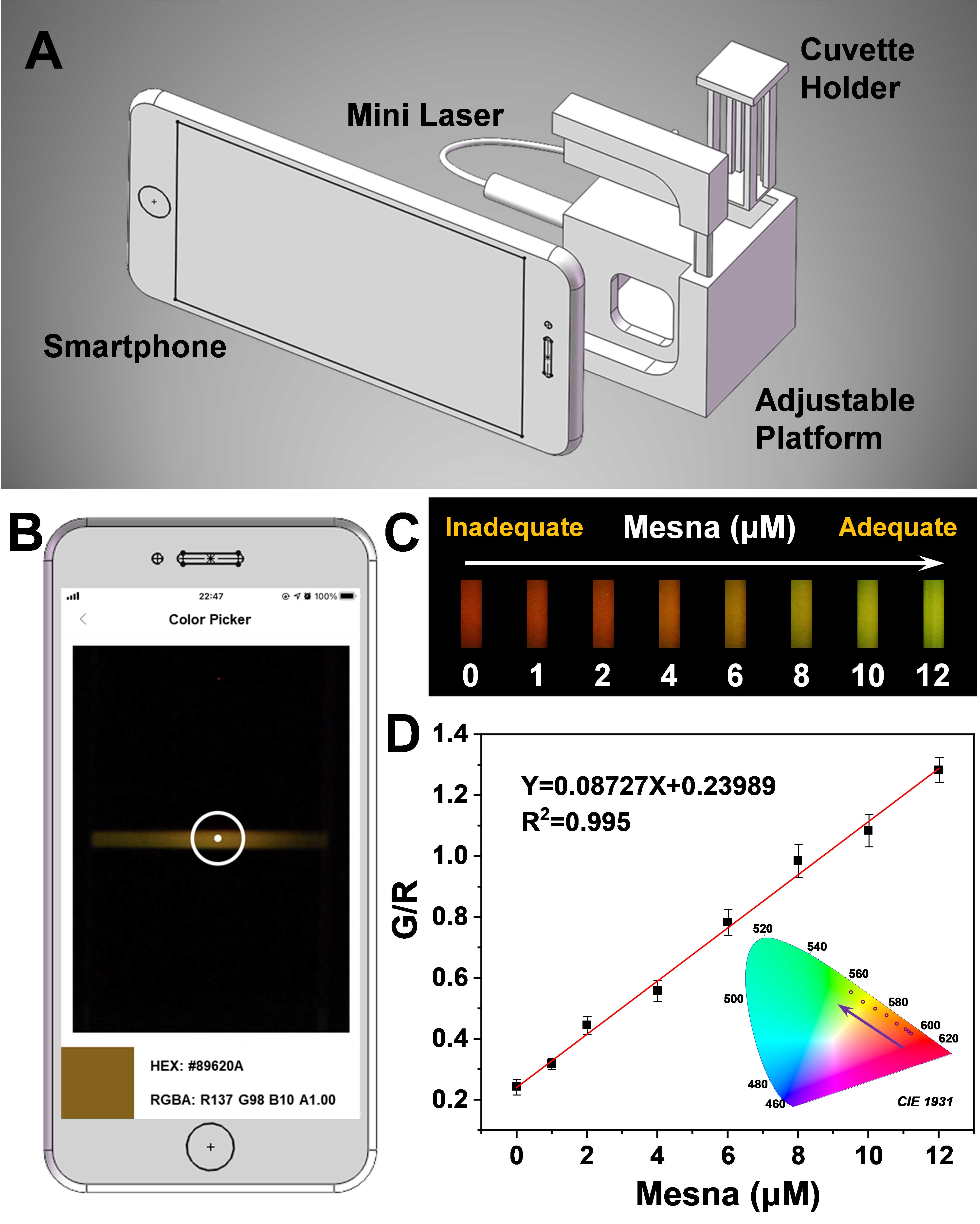Research
Upconversion-based Nanosensor Developed for Chemotherapy Drug Detection
| By
As an important regional antidote for protecting the urinary system of chemotherapy patients, mesna needs to be monitored in real-time to ensure the curative effect. The fluorescence method is a powerful tool in real-time detection with the advantage of fast response and visualization. However, the background interference limits its application in biological sensing.
To solve this problem, a research team led by Prof. JIANG Changlong from the Institute of Solid State Physics, Hefei Institutes of Physical Science (HFIPS), Chinese Academy of Sciences (CAS), proposed a new method for visual detection of mesna.
The results were published in Analytical Chemistry recently.
In this paper, scientists described how they monitored quantitative mesna visually in real-time/on-site conditions with a newly-developed portable sensing platform featuring upconversion-based nanosensor.
The nanosensor was constructed by upconversion nanoparticles (UCNPs) and ethyl violet (EV), in which the UCNPs acted as donors and EV as the quencher.
The addition of mesna caused the variations of fluorescent and colorimetric chromaticity, realizing the dual-readout function of the nanosensor. Benefiting from the NIR excited upconversion luminescence, the background interference of biological samples was eliminated and effectively improved the sensitivity of the detection. The LOD of the nanosensor was as low as 26 and 48 nM for the fluorescence and colorimetric signals, respectively. In addition, a highly compatible portable sensing platform was designed for facile detection of mesna with the LOD of 56 nM.
The nanosensor, with excellent selectivity and anti-interference ability, displayed good reliability in real sample detection.
The platform can be developed as point-of-care testing application for real-time monitoring of mesna levels to guide dose adjustments for improving the therapeutic efficacy. It has provided a simple and reliable strategy for clinical drug monitoring and exhibits potential application prospects.
This work is financially supported by National Natural Science Foundation of China (Nos, 21876175), National Key Research and Development Program (2021YFD2000200) and Key Research and Development Program of Anhui Province (202004d07020013).

Figure 1. Portable sensing platform for visual quantitative monitoring of mesna. (Image by HU Bin)

- Attachments Download:
-
contact
Prof. JIANG Changlong
E-mail: cljiang@iim.ac.cn


